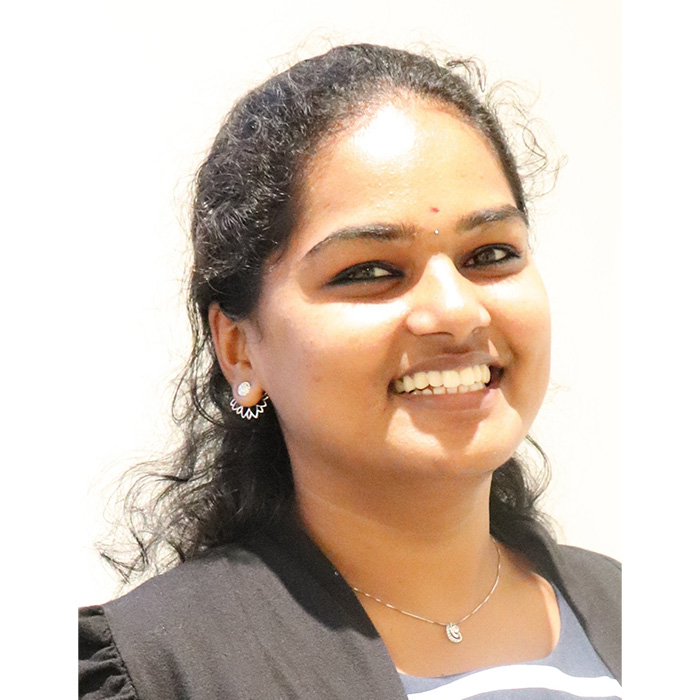
Nithyapriya Boopathi
PhD Candidate
IIT Bombay - Monash Research Academy
Nithyapriya Boopathi, pursuing Ph.D, specialises in Remote Sensing data analysis and modelling. Her main focus is on retrieving soil moisture using L- & P- band radiometer data and developing a model for first of its kind of P-band data. Her research also includes field data collection for the dataset to be used in the model and integrating them to a remote sensing platform. She was also involved in tutoring courses on Environmental Engineering & Spatial Communications for Civil Engineering at Monash University, Australia. She also assisted the course on "Introduction to SAR data analysis" at CSRE, IIT Bombay, India. She has a Masters in Remote Sensing & G.I.S and a Bachelors in Civil Engineering. She also had the privilege of visiting NASA's John Kennedy Space Centre at Florida during her visit to University of Florida, Gainesville. She is a nature-lover, practices yoga and like travelling.
Soil is the living skin of the Earth, and can be described as the interface between biology and geology. It is the water in soil, known as soil moisture keeps the Earth’s biota alive. Timely information on soil moisture is required to monitor and forecast agricultural droughts, wildfires, flood risk areas, landslides, etc. Soil Moisture is an important geophysical variable that needs reliable quantification for applications in hydrology, meteorology and agriculture. It has been demonstrated that soil moisture estimated using the space-borne L-band radiometry can be operationally used for drought monitoring, large scale flood mapping and weather forecasting. However, they provide measurements corresponding to a shallow depth of 5 cm and is also affected by the presence of overlaying vegetation and roughness. P-band radiometry provides a potential to study deeper depth soil moisture as the microwave frequency is lower. The effect of roughness and vegetation in soil moisture estimation is also less compared to L-band. Currently, there is no P-band radiometer system in operation to collate a global dataset of response over the globe. My research is a pilot study using Polarimetric P-band Multibeam Radiometer (PPMR) at 740 MHz / wavelength of 40 cm.
The main aim of this research is to evaluate the response of P-band radiometer for a realistic range of surface conditions at the field scale. The three field conditions that have been addressed include: Case 1- Bare Soil, Case 2-Grass covered soil, a low vegetation case with vegetation water and Case 3- Wheat covered soil, a dense vegetation case with vegetation water content. To this end, reduced roughness and vegetation impacts have been demonstrated for P-band when compared to L-band.
This research will be of help to a variety of users like space agencies, the common man as well as scientists. For space agencies like NASA, ESA, ISRO, CESBIO in particular, this work will help them understand and implement future missions for deeper depth soil moisture.